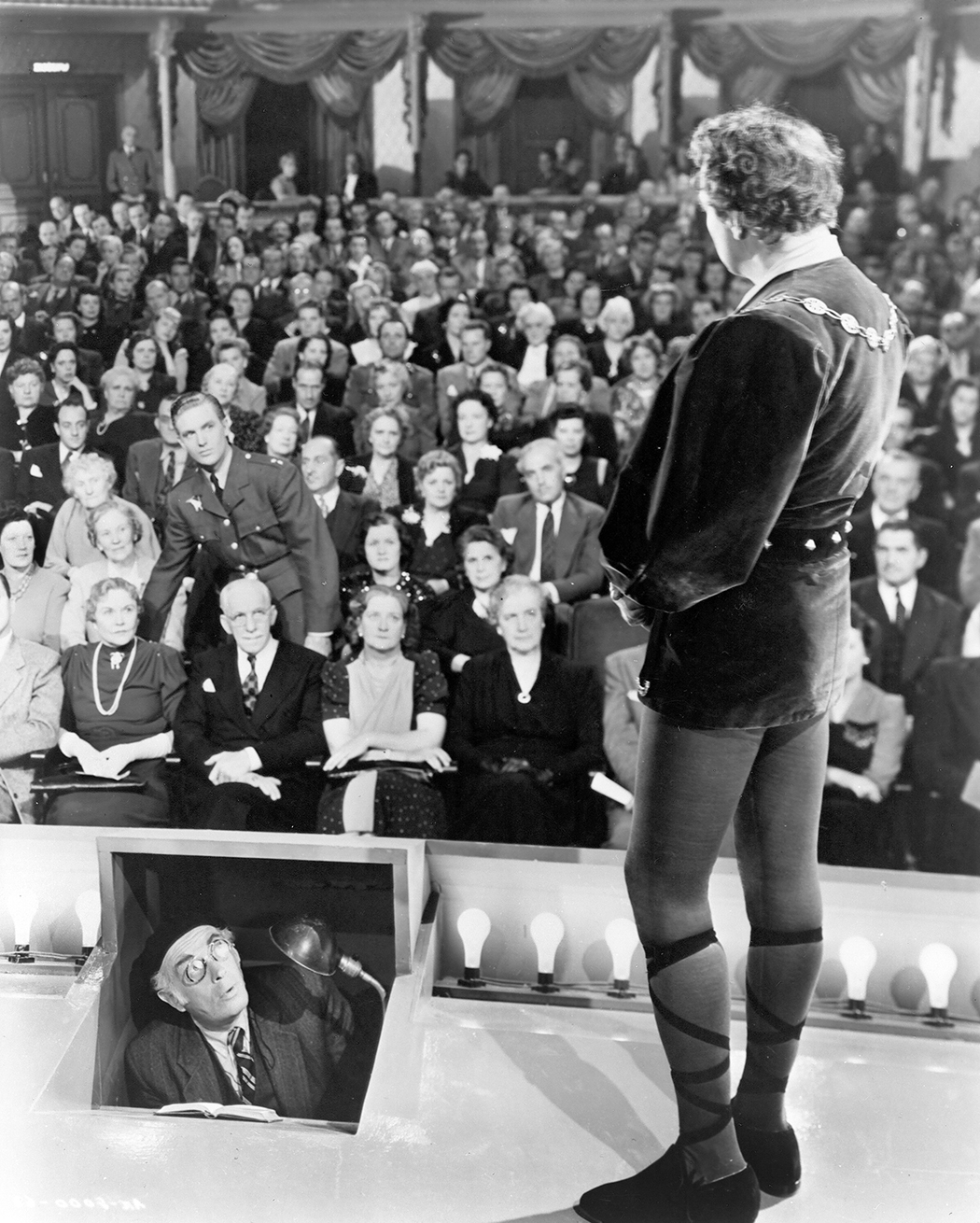
The Black Maria Review: The Recipe for a Perfect Film: Ernst Lubitsch’s To Be or Not to Be
Written by: Jill Blake, CC2K Film Editor
CC2K Film Editor Jill Blake reviews the Criterion blu-ray of the Ernst Lubitsch comedy To Be or Not to Be.
Throughout the studio era of Hollywood, classic films were generally limited by the tight constraints of the Production Code. Married couples couldn’t share a bed, kisses were light pecks interspersed with completely unrelated, unsexy conversation, and politically subversive material was absolutely not tolerated. While numerous directors were forced to make artistic concessions (either by the Hays Office or their studio bosses), a small handful of visionaries pushed the limits of the code and redefined filmmaking.
Enter Ernst Lubitsch, his trademark “touch”, and his farcical masterpiece To Be or Not to Be (1942). What is arguably Lubitsch’s crowning achievement, To Be or Not to Be was critically panned and put the director in the hot seat for the film’s controversial subject matter.
By the time To Be or Not to Be was released, the United States was eyeballs deep into World War II, and the film’s effervescent star Carole Lombard (Mrs. Clark “King of Hollywood” Gable) had been killed in a tragic airplane crash. Lombard didn’t even live to see the film’s release. Audiences were eager to see her in her last role, but weren’t prepared to encounter Lubitsch’s biting, witty commentary on a very raw and current subject: Nazi-invaded Warsaw.
Jack Benny is “ that great, great Polish actor Joseph Tura.” Alongside his wife Maria (Lombard), they headline an established, well-respected acting troupe in 1939 Warsaw. Think of the Turas as the Lunts of Poland (as pointed out in a review by New York Times critic Bosley Crowther). Tura and Company are in rehearsals for what surely will be a controversial play about the Nazis, Gestapo. While in dress rehearsals for opening night, the acting troupe is informed they cannot go on with the performance and must return to one of their previous shows, the tried and true Hamlet, with Joseph in the title role. While waiting for her scene in the dressing room, Maria receives a lovely bouquet of flowers from an admirer, Lieutenant Stanislav Sobinski, played by an incredibly young Robert Stack. He requests a meeting with her and she sends a reply, asking him to visit her in the dressing room at the beginning of Hamlet’s famous soliloquy “To Be or Not to Be.” Meanwhile, Joseph, completely unaware of Stanislav or his plans to meet Maria, is astonished to see an audience member get up during his shining moment on stage. Needless to say, it’s a damaging blow to his ego. This routine continues each night: as Tura reaches the edge of the stage and asks that rhetorical question, Stanislav rises to his feet and exits.
 Mandatory credit: United Artists/Photofest
Mandatory credit: United Artists/Photofest
Fast forward to 1940; Poland is invaded, and Warsaw is crumbling. Maria’s handsome admirer has been sent to Britain to fight as a bomber pilot in the Polish squadron of the RAF. It is in Britain where Stanislav encounters Professor Siletsky (Stanley Ridges) who claims to be from Warsaw. Stanislav begins to suspect that Siletsky is a Nazi spy when, at the mention of Maria Tura’s name, Siletsky denies ever hearing of her. After reporting his suspicions to the proper authorities, Stanislav is sent back to Warsaw on a secret mission to stop Siletsky from gathering information from the underground movement. Once he arrives in Poland, Stanislav contacts Maria to assist him (and she does so by most capably seducing Professor Siletsky), and Joseph finally discovers this is the man who walked out on his soliloquy. Before he can ask too many questions about Stanislav’s presence, Joseph is thrown into a complicated plan to keep Siletsky from passing more secrets to the Nazis.
 “Heil Hitler”
“Heil Hitler”
The Turas and Stanislav enlist the help of the rest of the acting troupe to carry out elaborate schemes to foil various Nazi plans. Each time Tura and Company are on the verge of being unmasked, they improvise their way through the “scene”.
Ernst Lubitsch was one of the most popular directors working in Hollywood, but was also known for pushing boundaries, especially with sex. There are several moments in To Be or Not to Be that makes one wonder how Lubitsch was able to pull it off. A favorite exchange occurs during Maria’s seduction of Professor Siletsky:
Professor Siletsky: Shall we drink to a blitzkrieg?
Maria Tura: I prefer a slow encirclement.
“…Mr. Lubitsch has set his actors to performing a spy-thriller of fantastic design amid the ruins and frightful oppressions of Nazi-invaded Warsaw. To say it is callous and macabre is understating the case.
“But it is hard to imagine how any one can take, without batting an eye, a shattering air raid upon Warsaw right after a sequence of farce or the spectacle of Mr. Benny playing a comedy scene with a Gestapo corpse. Mr. Lubitsch had an odd sense of humor—and a tangled script—when he made this film.
“Too bad a little more taste and a little more unity of mood were not put in this film. As it is, one has the strange feeling that Mr. Lubitsch is a Nero, fiddling while Rome burns.”
Lubitsch fired back with a response to Crowther’s review, which was printed in The New York Times on March 29, 1942. Lubitsch explained that he was accused of “three major sins”: combining melodrama with comedy and farce, endangering the war effort, and having his story take place in Warsaw. Lubitsch breaks down his film “recipe”: “dramatic when the situation demands it, satire and comedy whenever it is called for.” He called it “tragical farce or a farcical tragedy.” All that matters, according to Lubitsch, is that “the picture plays.” That is the “Lubitsch Touch” right there, folks.
Resources:
